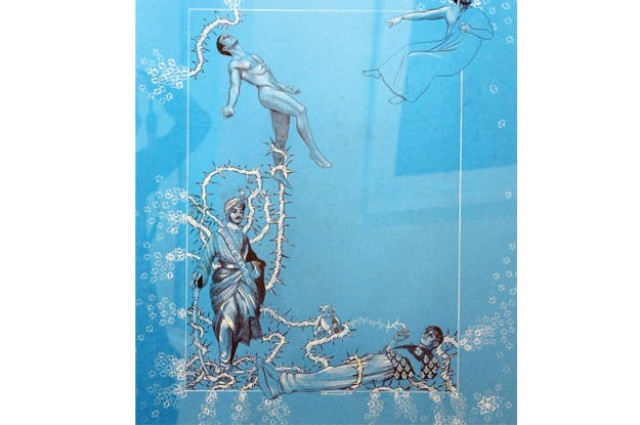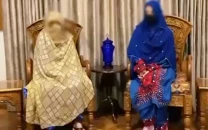Grace in hand: Intricate pattern drawings on display
Most of the work is mixed media on paper while some makes use of wax paper

The patterns have been taken from various French and Spanish manuscripts and Persian book illustrations from 11th to 13th century. PHOTOS: EXPRESS
Aijazuddin, a visual artist and writer, studied art history, journalism and studio art at New York University. He has exhibited in Pakistan and internationally at various group and solo exhibitions. Most of his work is mixed media on paper, while some makes use of wax paper.
Most of the intricate patterns on display have been taken from various French and Spanish manuscripts from the 11th to the 13th century, according to the artist, while some are inspired by Persian book illustrations from the same time period.
He told The Express Tribune that drawings in the exhibition are a result of beginning of his engagement with the concept of illuminated manuscripts. “It is an idea that grew naturally out of my own interest in various manifestations of religious and devotional art,” he said.
He further said that work on the series is ongoing. “For me it has been an exciting departure into something which has been a rewarding examination into notions of divinity, loss, identity, independence, historical weight and in a larger sense, statehood,” the artist said.
His work uses beautiful colours, particularly gold, to form intricate drawings on paper and wax paper. Speaking to The Express Tribune, Aijazuddin mentioned that he makes the colour himself because generic gold is not dense enough and does not cut it. This speaks volumes about his need for perfect and is precisely the reason why the work stands out from masses.
Khaas Art Gallery Curator Alia Bilgrami told The Express Tribune that Aijazuddin’s practice has taken a new turn — his palette, techniques and composition and scale have all evolved. “His work is more spontaneous and drawing based now. Even though his scale may have become significantly smaller but his treatment is a lot more detailed and intricate,” she said.
She further mentioned that the use of border and traditional motifs by the artist echo the aesthetics of early Persian manuscripts as do his use of illumination. “Iconography still features heavily in his work,” said Bilgrami.
The work will be exhibited at the Khaas Art Gallery till September 28.
Published in The Express Tribune, September 17th, 2015.



















COMMENTS
Comments are moderated and generally will be posted if they are on-topic and not abusive.
For more information, please see our Comments FAQ